A smooth wedge of mass M rests on a smooth horizontal surface. A block of mass m is projected from its lowermost point with velocity v0. What is the maximum height reached by the block?
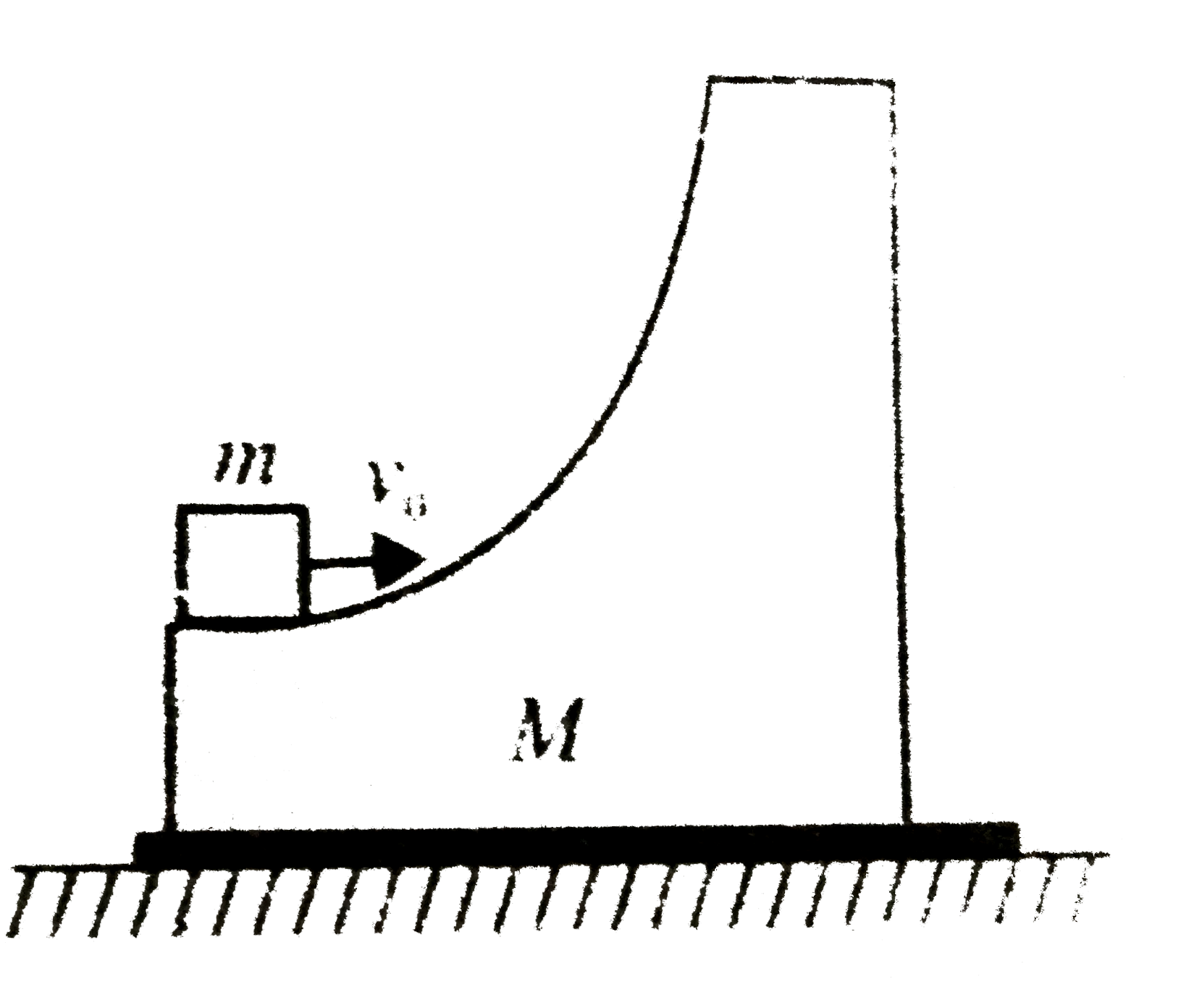
Step by step video & image solution for A smooth wedge of mass M rests on a smooth horizontal surface. A block of mass m is projected from its lowermost point with velocity v_(0). What is the maximum height reached by the block? by Physics experts to help you in doubts & scoring excellent marks in Class 11 exams.
Updated on:21/07/2023Topper's Solved these Questions
- IMPULSE AND MOMENTUMBOOK - ANURAG MISHRACHAPTER - IMPULSE AND MOMENTUMEXERCISE - Level 1
110 Videos
- IMPULSE AND MOMENTUMBOOK - ANURAG MISHRACHAPTER - IMPULSE AND MOMENTUMEXERCISE - L-2
21 Videos
- IMPULSE AND MOMENTUMBOOK - ANURAG MISHRACHAPTER - IMPULSE AND MOMENTUMEXERCISE - matching
3 Videos
- FORCE ANALYSISBOOK - ANURAG MISHRACHAPTER - FORCE ANALYSISEXERCISE - Matching type
13 Videos
- RIGID BODY MOTIONBOOK - ANURAG MISHRACHAPTER - RIGID BODY MOTIONEXERCISE - MATCH THE COLUMN
12 Videos
Similar Questions
Figure shows a block A of mass 6m having a smooth semicircular groove of radius a placed on a smooth horizontal surface. A block B of mass m is released from a position in groove where its radius is horizontal. Find the speed of the bigger block when the smaller block reaches its bottom most position.
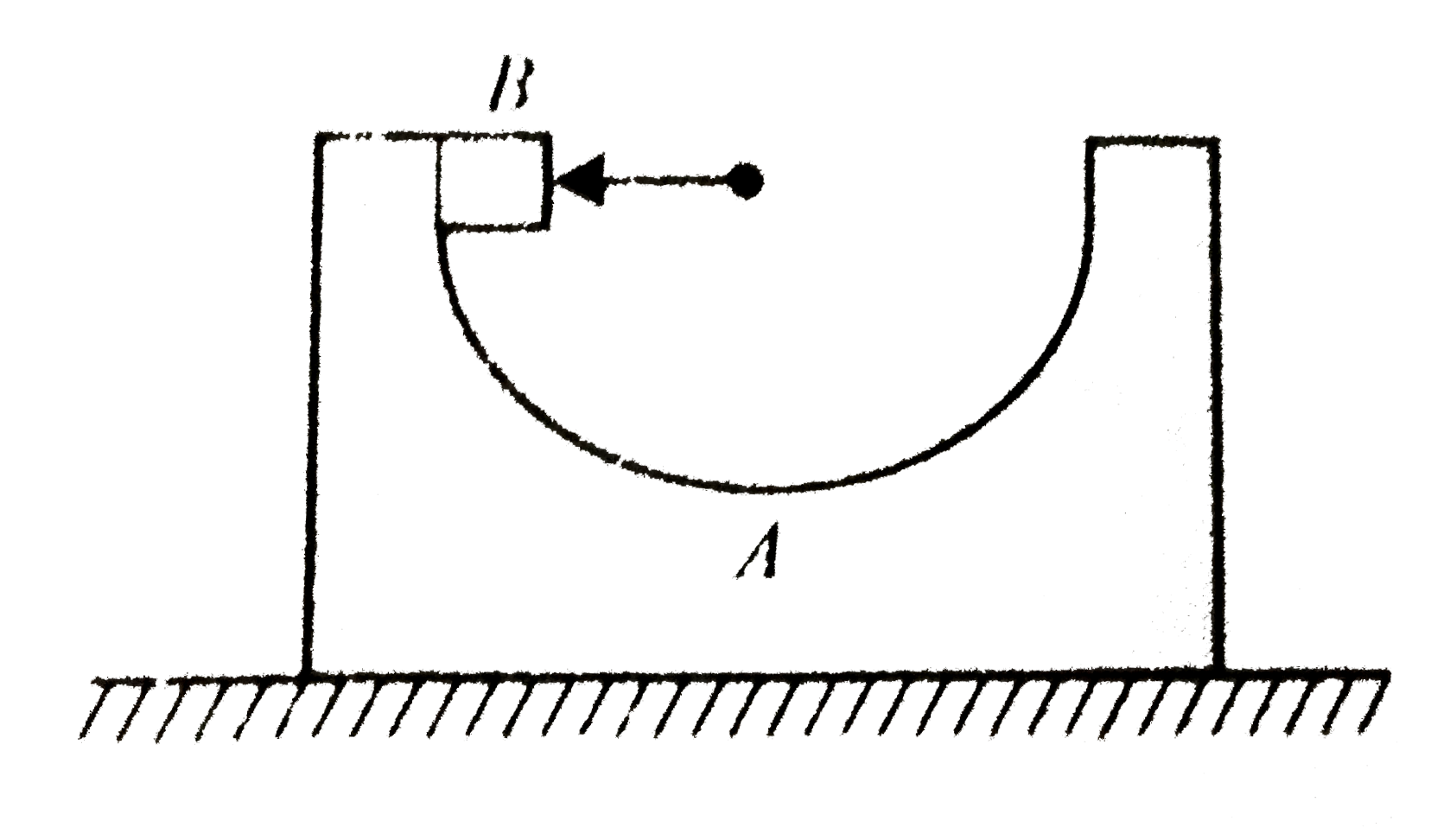
View SolutionA body of mass M with a small block m placed on it rests on a smooth horizontal surface. The block is set in motion in the horizontal direction with a velocity v. To what height relative to the initial level will the block rise after breaking off from the body M. Friction can be assumed to be absent.
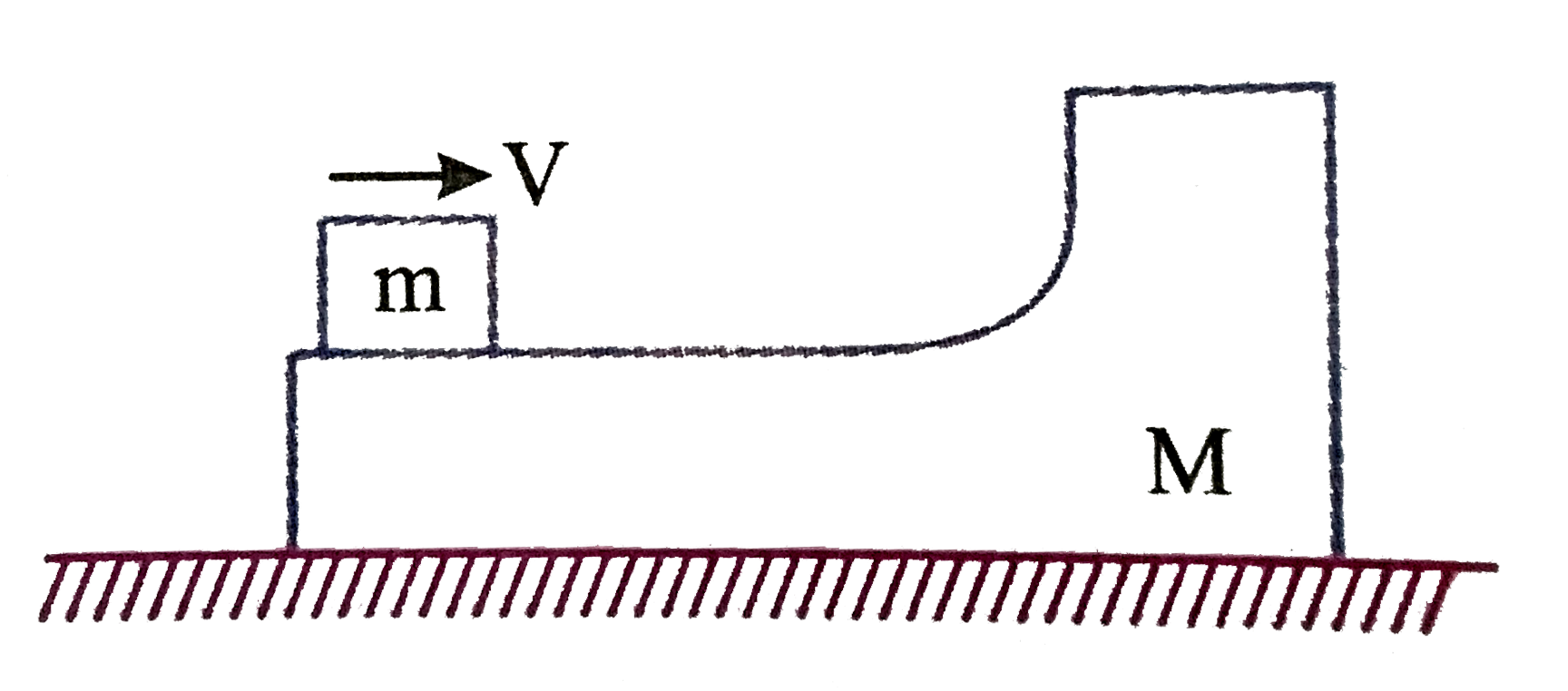
View Solution
Knowledge Check

A smooth wedge of mass M is pushed with an acceleration a=>anθ and a block of mass m is projected down the slant with a velocity v relative to the wedge.
Q. The time taken by the block to reach the ground is:AlvB√2lgsinθC√2lgcosθDvgsinθ_2019_CBT4_E01_069_Q01.png)
A wedge of mass 4m is initially at rest on frictionles horizotnal surface. A small block of mass m moving with speed v0 and climbs on wedge. Find maximum height achieved by blockA5v202gB25v20gCv202gD2v20gA long block A of mass M is at rest on a smooth horizontal surface.A small block B of mass M/2 is placed on A at one end and projected along A with some veklocity v.The coefficient of friction between the block is μ then , the accelerations of blocks A and B before reaching a common velocity will be respectively
 Aμg2(towards right),μg2(towards left)Bμg2(towards right),(μg)(towrards left)Cμg2(towards right),(μg)(towrards left)D(μg)(towards right),μg2(towrards left)
Aμg2(towards right),μg2(towards left)Bμg2(towards right),(μg)(towrards left)Cμg2(towards right),(μg)(towrards left)D(μg)(towards right),μg2(towrards left)
A wedge of mass m1 with its upper surface hemispherical in shape, as shown in Fig. 4E. 7 (a), rests on a smooth horizontal. surface near thewall. A small block of mass m2 slides without friction on the hemispherical surface of the wedge. What is the 'maxi.mum velocity attained by the wedge ?
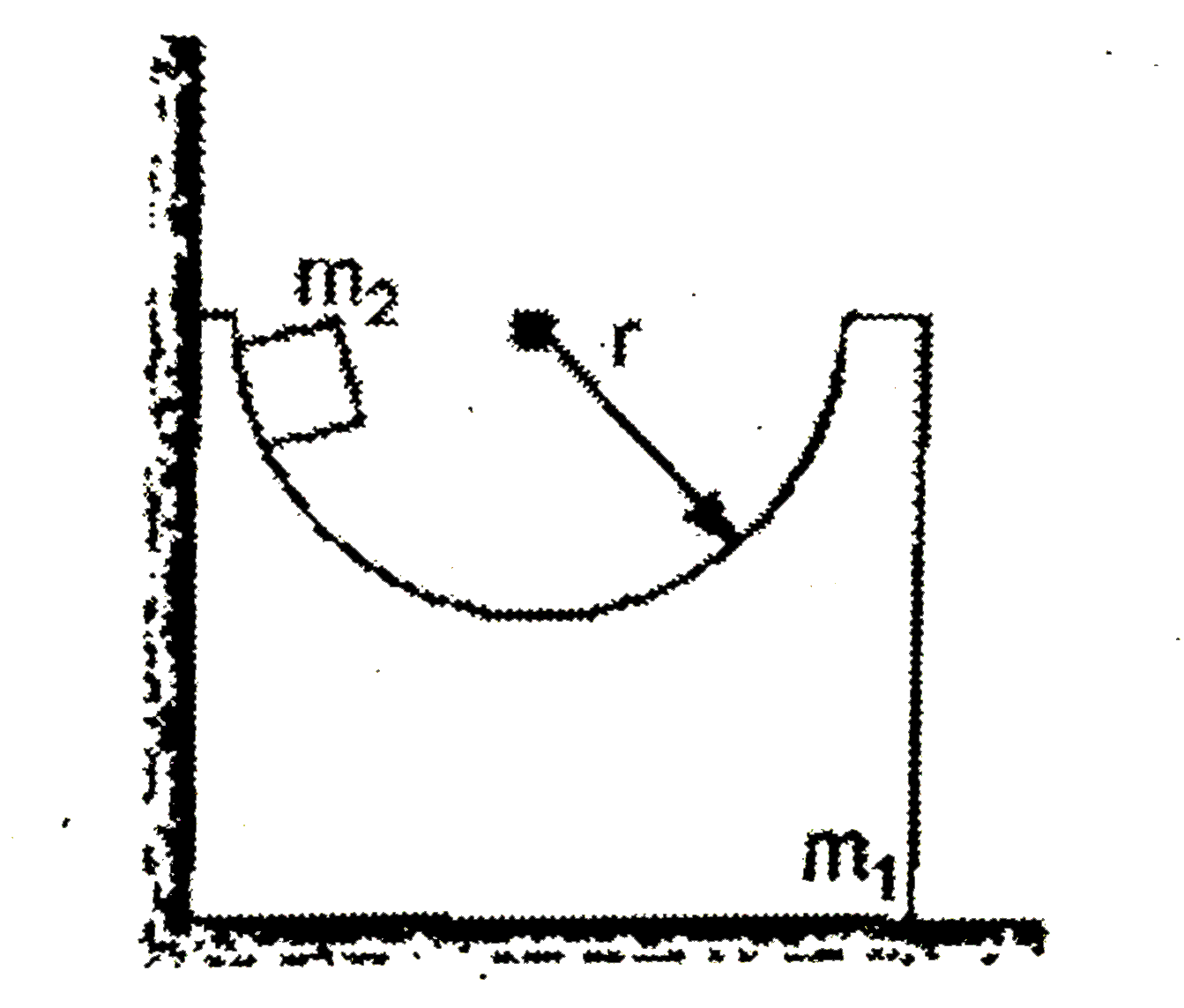
View SolutionThe inclined surfaces of two movable wedges of the same mass M are smoothly conjugated with the horizontal plane as shown in figure. A.small block of mass m slides down the left wedge from a height h. To what maximum, height will the block rises on the right wedge.
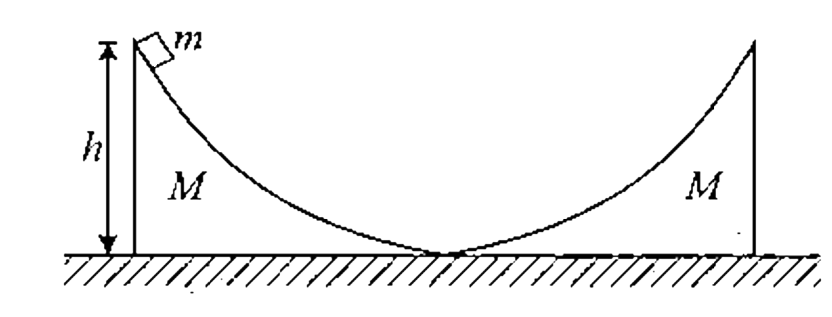
View Solution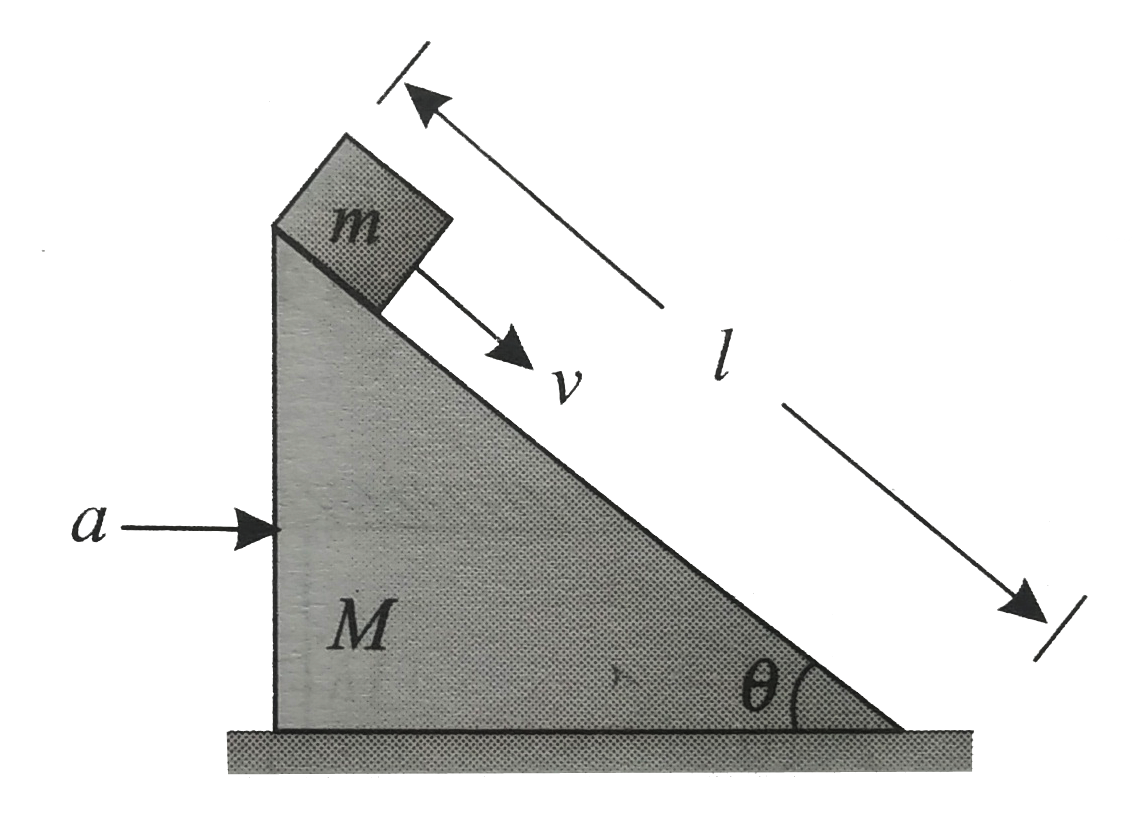
A smooth wedge of mass M is pushed with an acceleration a=>anθ and a block of mass m is projected down the slant with a velocity v relative to the wedge.
The horizontal force applied on the wedge is:
View Solution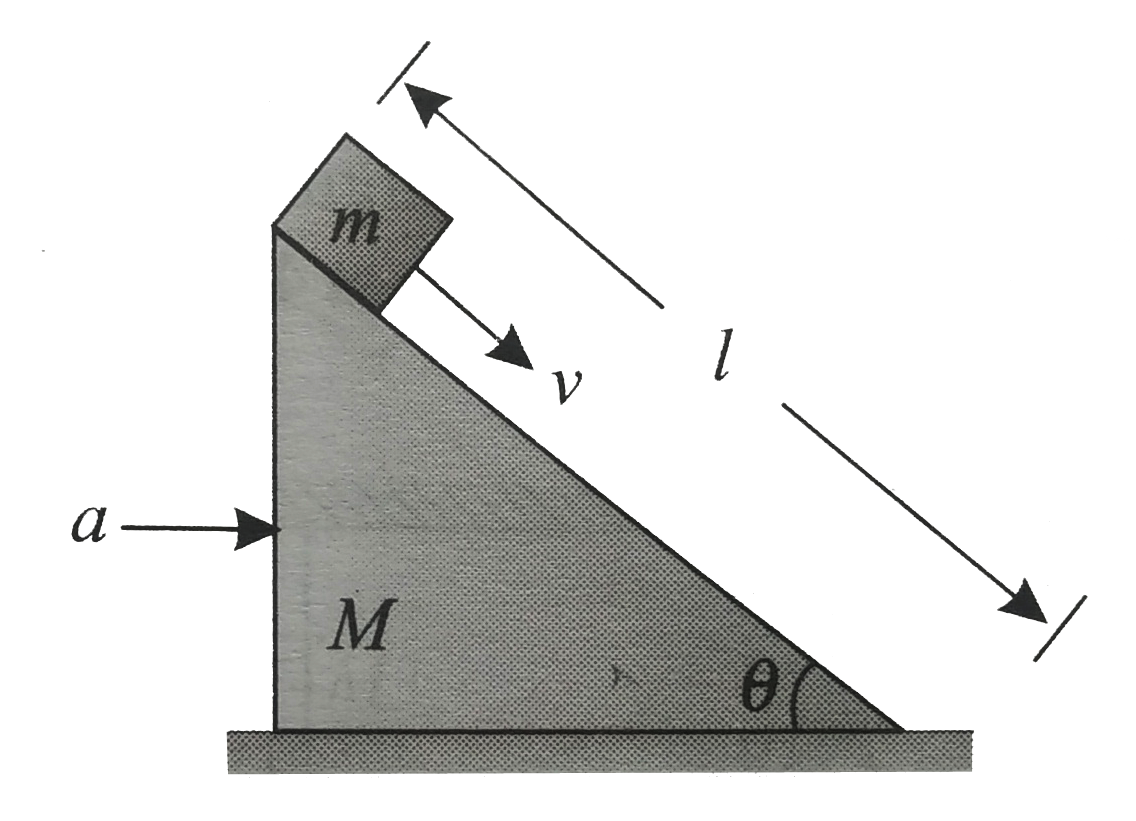
A smooth wedge of mass M is pushed with an acceleration a=>anθ and a block of mass m is projected down the slant with a velocity v relative to the wedge.
Q. The normal reaction between wedge and block is:
View Solution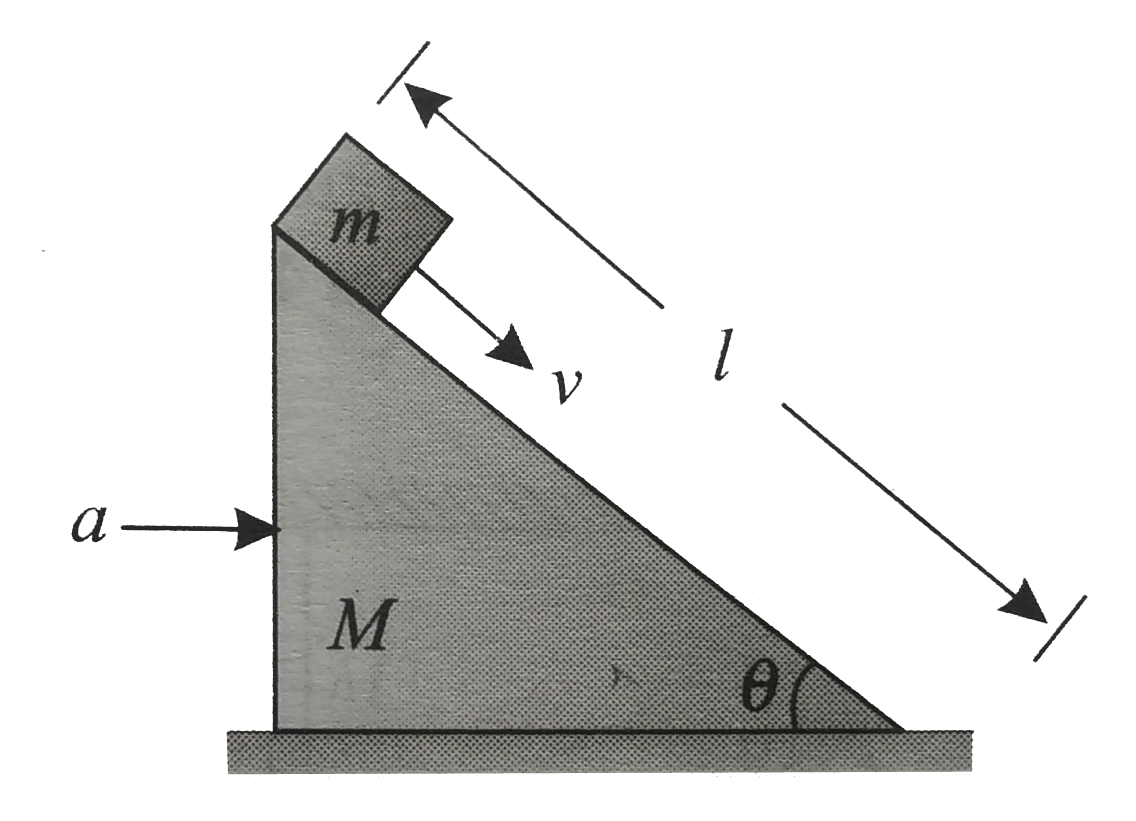
A smooth wedge of mass M is pushed with an acceleration a=>anθ and a block of mass m is projected down the slant with a velocity v relative to the wedge.
Q. The normal reaction offered by ground to the wedge is:
View Solution
